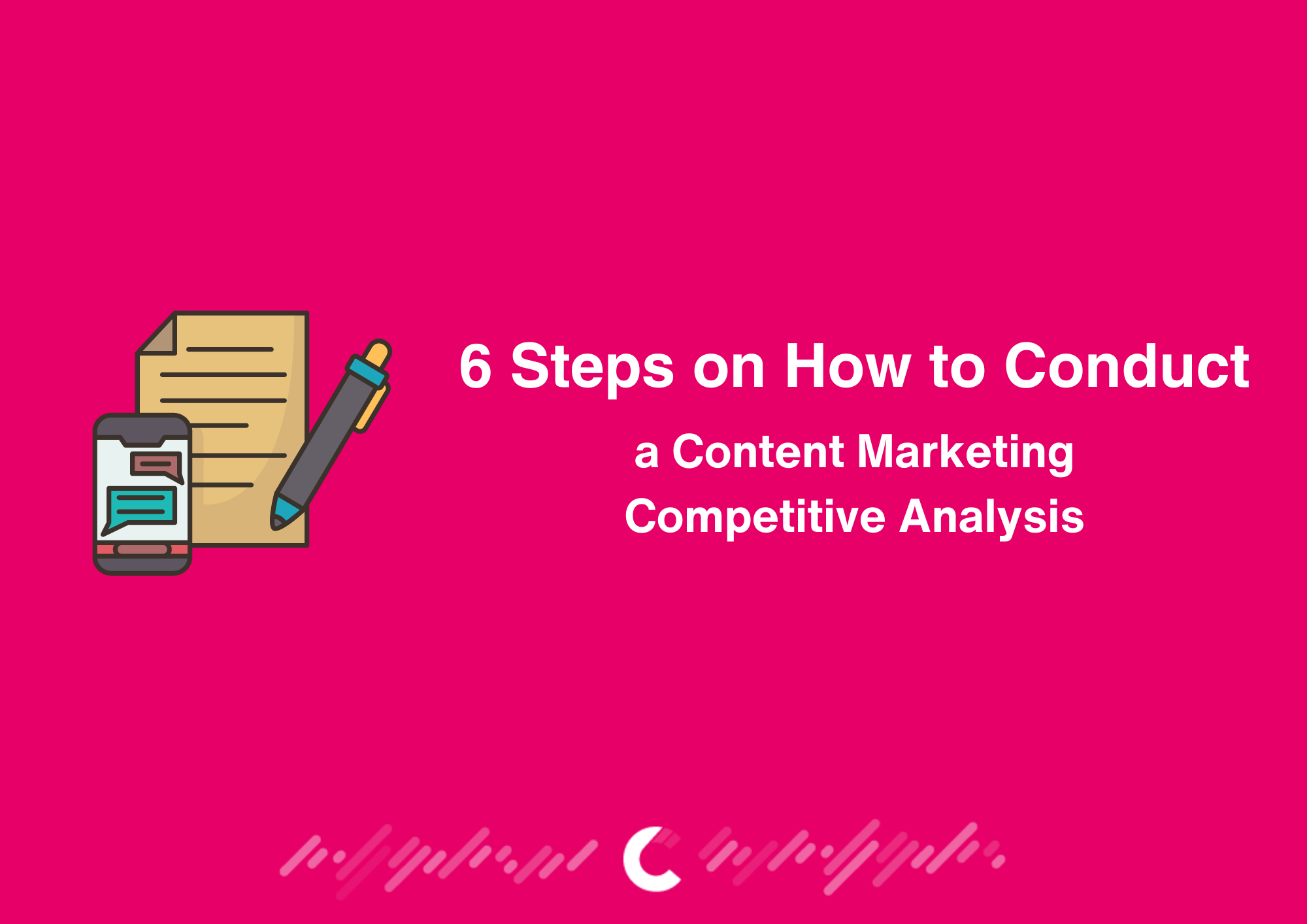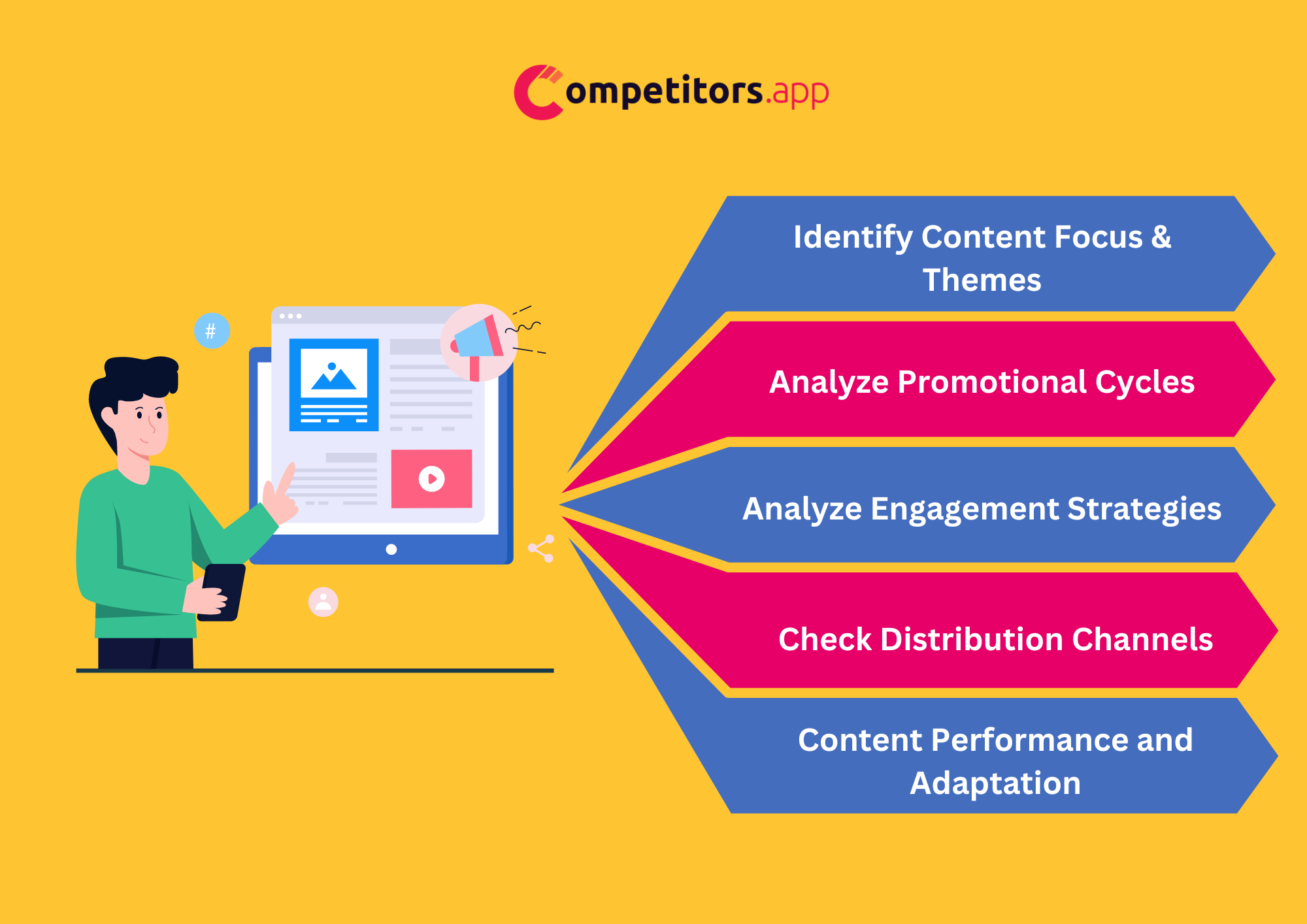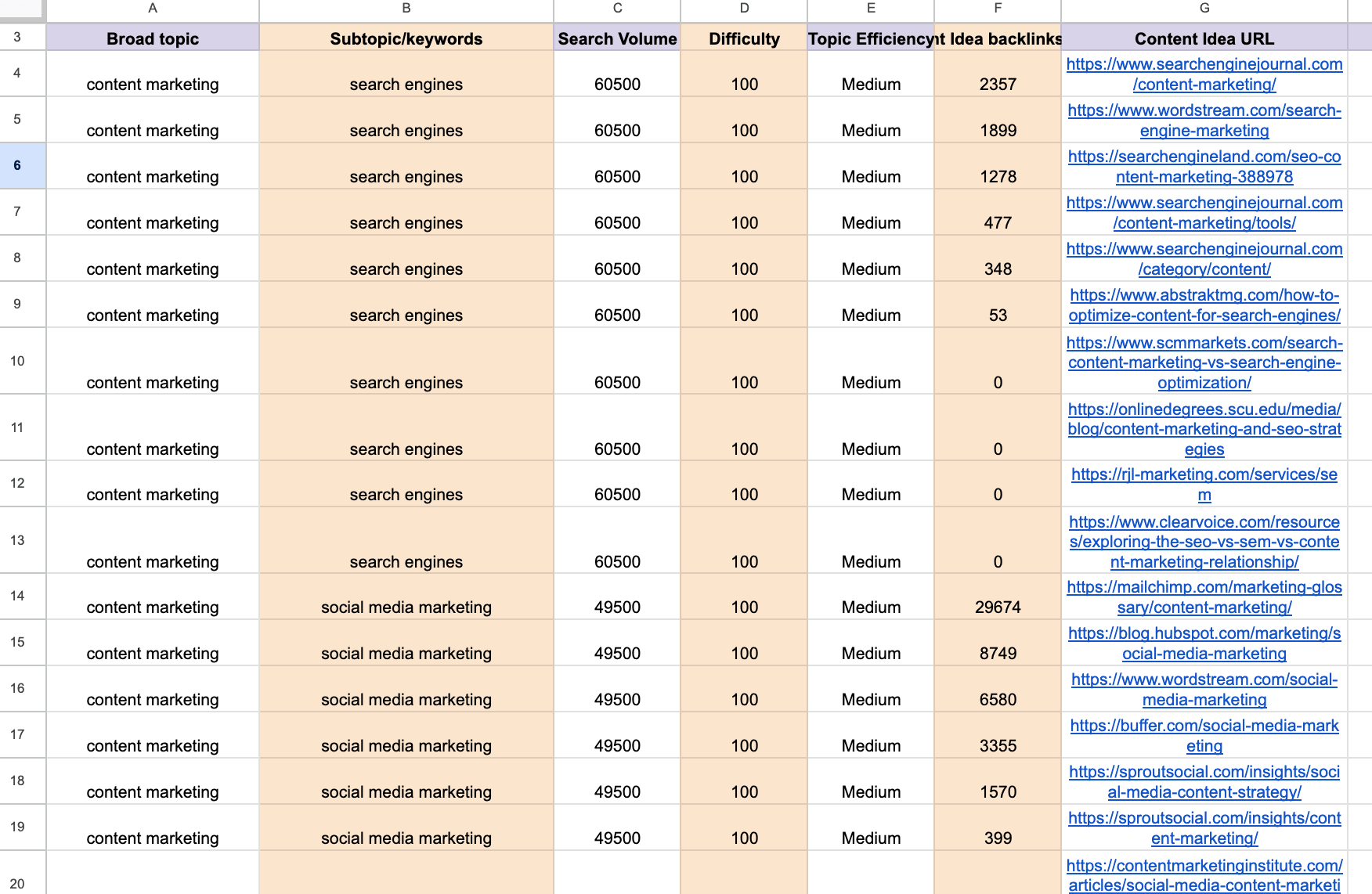
Understanding the content strategies of your competitors is crucial for success in the digital marketing sphere. The process of competitor content analysis has evolved significantly, becoming an essential tool for businesses looking to improve their online presence. This evolution is highlighted by the rapid growth of the content marketing industry, which is expected to expand to $600 billion by 2024, according to Technavio. This increase underscores the critical need for businesses to analyze their competitors’ content to stay ahead in the highly competitive online market.
Competitor content analysis involves a detailed examination of the content produced by your market rivals. This process goes beyond simply looking at what they publish; it requires analyzing the strategies behind their content creation. Such an analysis aims to identify both the strengths and the weaknesses of your own content strategy by comparing it with those of your competitors. It is a strategy for gathering valuable information that can inform better decision-making regarding your own content marketing efforts.

Content significantly influences success, understanding your competitors’ strategies is crucial for gaining an advantage. Analyzing the content marketing approaches of your competition is not aimed at copying them but rather at finding ways to innovate and set your brand apart. By examining what others in your industry are doing, you can discover widespread trends, identify topics they haven’t covered, and spot opportunities that you might not have noticed otherwise. This understanding is more than just beneficial; it serves as a guide for maneuvering through the complexities of digital marketing with efficiency and strategic planning.
Broad Industry Trends and the Value of Insight
When you delve into the content strategies of your competitors, you’re doing more than just snooping around. You’re conducting valuable market research that uncovers the direction in which your industry is moving. Understanding these trends helps ensure that your content doesn’t just echo the present but leads the charge into the future.
Identifying Content Gaps and Seizing Opportunities
One of the most actionable benefits of analyzing competitor content is the ability to spot gaps. These are topics or questions that your audience cares about but aren’t being adequately addressed by others in your field. Filling these gaps can position your brand as a thought leader and a go-to source for insights and solutions. Moreover, by recognizing what your competitors are missing, you can carve out a unique niche for your brand, distinguishing your voice in a crowded market.
Adjusting Your Strategy for Audience Needs
At the heart of content marketing lies a simple truth: it’s all about the audience. By observing the performance of your competitors’ content, you can glean what resonates with your shared audience—and what doesn’t. Which pieces are generating buzz and engagement? What topics seem to fall flat? This information is invaluable for fine-tuning your content strategy to better align with audience interests and preferences. It’s not about copying what works for others but understanding why it works and how you can adapt those principles to better serve your audience.
Exploiting Weaknesses in Competitors’ Approaches
Every strategy has its weaknesses, and identifying these in your competitors’ content approaches can provide you with a competitive edge. Perhaps their content is solid, but their distribution channels are limited. Maybe they’re not leveraging SEO effectively, or their content lacks a personal touch that resonates with readers. Whatever the case, recognizing these weaknesses allows you to adjust your strategy not just to compete but to outperform. It’s an opportunity to be not just different, but decisively better.

Competitors.app allows you to monitor your competitors' marketing moves in real-time. This includes updates to their website , email newsletter content, social media activity, and PPC competitor analysis..

How It Helps: SEMrush is a powerful tool for SEO and content marketing analysis. It offers insights into the keywords your competitors rank for, the performance of their content in search engines, and their backlink profiles.

How It Helps: BuzzSumo focuses on content discovery and performance analytics. It lets you see which content pieces are most shared and engaged with across social media platforms.

How It Helps: SimilarWeb provides insights into your competitors' web traffic sources, including search traffic, social media, referrals, and more.

How It Helps: Ahrefs is another SEO tool that excels in competitive analysis. Its Site Explorer feature allows you to analyze your competitors' top pages, view their most linked content, and understand their keyword strategies.

How It Helps: Google Alerts is a simple but effective tool for monitoring mentions of your competitors across the web. By setting up alerts for your competitors' brand names, you can stay updated on their latest news, blog posts, or any mention in the media.
Read the full comparison of competitive analysis tools.

Identifying your main competitors is essential for developing an effective content marketing and SEO strategy. This involves understanding who you’re competitive landscape and their market positioning.
Begin by conducting SERP searches to see which businesses rank highly for your targeted keywords, indicating your direct SEO competitors.
Also, consider the significance of search engine ads, as companies investing in ads for the same keywords are key competitors. Utilise SEO and competitor analysis tools like Competitors.app, SEMrush, or Ahrefs for a deeper dive into competitors’ strategies, including keyword usage and backlink profiles. Monitoring social media and forums can also highlight additional competitors based on audience discussions.
Finally, assess both direct and indirect competitors, the latter offering alternative solutions or targeting subsets of your audience, to refine your unique value proposition and spot market gaps.
Website traffic stands as a primary indicator of a site’s popularity and reach. Analyzing traffic not only shows you the volume of visitors but also their behavior patterns, such as time spent on site and bounce rates, offering clues about content engagement.
Engagement rates, including shares and comments, directly reflect how content resonates with the audience. High engagement rates often indicate that content is not only reaching its intended audience but also striking a chord with them, prompting interaction and sharing. This metric is invaluable for understanding what types of content foster community and dialogue.
Tracking competitor backlink profiles provide insights into the authority and trustworthiness of your competitors’ content. A robust profile with links from reputable sites can boost search engine rankings and drive traffic. Examining these can reveal content types and topics that earn recognition and credibility within your industry.
Lastly, keyword rankings are crucial for SEO success. Understanding which keywords your competitors rank for can uncover gaps in your own strategy and highlight opportunities for improvement. Together, these metrics paint a comprehensive picture of content performance, guiding your strategy towards more effective and engaging content.
Using SEO metrics to analyze your competitors’ content involves looking at which keywords bring them the most traffic, the quality and quantity of their backlinks, and their overall search engine rankings. This can help you identify SEO opportunities and weaknesses in your own strategy. Here’s how each of these metrics can be utilized effectively:
Keyword Analysis
Keywords are the foundation of SEO, guiding how content is discovered by users on search engines. By identifying the keywords that drive significant traffic to your competitors’ websites, you can understand what your target audience is searching for.
Backlink Analysis
Backlinks, or inbound links from other websites, significantly impact a website’s authority and search engine rankings. Analyzing the quality and quantity of backlinks to your competitors’ content can reveal how their content is perceived in terms of credibility and value.
Search Engine Rankings
Evaluating your competitors’ positions in SERPs for key keywords can offer direct insights into their SEO effectiveness. High rankings typically suggest that their content is well-optimized for search engines, resonating with users, and achieving high engagement rates.
Content Optimization and User Experience
Beyond keywords and backlinks, the overall optimization of your competitors’ content plays a crucial role in SEO success. This includes the use of meta tags, headings, image alt texts, and mobile responsiveness. Additionally, factors like page load speed and user engagement metrics (such as bounce rate and time on site) can influence search rankings.
Tracking involves regularly monitoring your competitors’ content outputs and updates. This can be done through setting up Google Alerts, using social media monitoring tools, or subscribing to their newsletters. Staying updated on their content allows you to react swiftly to shifts in their strategy. Here’s how to effectively track your competitors’ content:
Evaluating your competitors’ content means looking at its quality, relevance, and engagement. Assess whether their content answers the audience’s questions better or more thoroughly than yours. Consider the visuals, the ease of reading, and how well it is optimized for search engines.
Assess Content Quality
Quality is subjective but crucial. High-quality content is typically well-researched, authoritative, and offers unique insights or value to its readers. When evaluating your competitors’ content quality, consider the following:
Determine Content Relevance
Relevance is key to engaging the target audience. Content must resonate with the audience’s interests, needs, and pain points. Evaluate your competitors’ content for relevance by considering:
Analyze Engagement Metrics
Engagement metrics can offer a direct insight into how the audience interacts with content. Look for:
Visual and Usability Evaluation
The presentation of content plays a significant role in its accessibility and engagement levels. Consider:
When analyzing your competitors’ blogs, it’s essential to examine various elements to enhance your own content strategy effectively. Begin by identifying the topics covered across their blogs. Look into the breadth and depth of these topics, noting the main themes and any new topics they are starting to address. This analysis helps understand what subjects engage your shared target audience and highlights areas that are less explored.
The next step involves assessing how often your competitors publish new content. Observing their posting frequency and the volume of content they produce provides insights into their content marketing strategy and how much effort and resources they are dedicating to their blogs.
Engagement metrics such as comments, shares, likes, and reactions are crucial for understanding how the audience interacts with your competitors’ content. These metrics offer direct feedback on the content’s effectiveness in resonating with the audience.
Additionally, it’s important to identify any content gaps in your competitors’ blogs. These are topics or questions that are not fully addressed or completely overlooked. Recognizing these gaps presents an opportunity for your blog to deliver unique and valuable content to the audience, attracting those in search of information not found elsewhere.
Finally, examining how your competitors format and present their blog content can offer valuable lessons. Pay attention to the use of visual elements, the readability and structure of the content, and any interactive features. Analyzing how well their content is optimized for search engines, including keyword integration, meta descriptions, title tags, and backlink profiles, can also provide insights into their SEO strategies. This comprehensive analysis aids in refining your blog to better meet the needs of your audience and improve its visibility and engagement.

To unveil your competitors’ content marketing strategies, look for patterns in their content. Are they focusing on particular topics or formats? Do they have recurring themes or promotional cycles? This can give you competitive insights into their long-term strategy and how they aim to engage their audience.
Identifying Content Focus and Themes: Begin by cataloging the types of content your competitors produce. Are they leaning heavily into blog posts, videos, infographics, or podcasts?
Analyzing Promotional Cycles: Monitoring how and when competitors promote their content can uncover their promotional strategies and cycles.
Engagement Strategies: Examine how competitors engage with their audience through content.
Distribution Channels: Look at where your competitors are distributing their content. Are they focused on certain social media platforms, email marketing, or third-party publications?
Content Performance and Adaptation: Assess how your competitors’ content is performing and how they adapt to performance insights. Tools like Competitors.app can provide visibility into which pieces of content are most shared or linked to.

A competitive content gap analysis involves identifying topics and keywords that your competitors haven’t thoroughly covered but are of interest to your audience. This can help you find niches or angles that can differentiate your content and attract more traffic. Here are some steps you can follow:
Begin by identifying a list of your main competitors, focusing on those that share your target audience or rank for keywords you’re targeting. Use tools like competitors.app.
Conduct comprehensive keyword research to identify the terms and phrases your audience uses when searching for information in your niche. Use tools like competitors.app.
Utilize analytics tools to review the performance of your competitors’ content. Look at engagement metrics, such as shares, comments, and likes, as well as SEO metrics like keyword rankings and backlink profiles.
With the data collected, identify the content gaps. These could be topics that are underrepresented, questions that aren’t fully answered, or emerging trends that haven’t been adequately covered.

Applying the insights gained from your competitor content analysis can transform your content strategy from good to great. The first step is to use the information to refine your content creation process. If your analysis reveals that certain topics or types of content are particularly popular or engaging within your industry, consider incorporating similar themes into your own content plan.
Next, address any content gaps identified during your analysis. These are opportunities for your brand to distinguish itself by providing value where competitors are lacking. By filling these gaps, you can attract a wider audience and establish your brand as a thought leader in your industry.
Moreover, use competitor insights to enhance your SEO strategy. If your competitors are ranking well for specific keywords, analyze their content to understand how they are achieving these rankings. You may need to adjust your keyword strategy or improve the quality of your content to compete effectively.
Finally, keep monitoring your competitors regularly. The digital landscape is constantly changing, and staying informed about your competitors’ strategies ensures that your content remains relevant and competitive. This ongoing analysis will help you adapt quickly to industry changes and maintain a strong position in your market.
Ideally, you should conduct a comprehensive competitive content analysis at least once every quarter. This frequency ensures that you stay up-to-date with industry trends and competitor strategies. However, continuous monitoring for significant updates or changes in your competitors' content strategy is recommended.
Yes, there are several free tools available that can assist with various aspects of a competitive content analysis, such as Google Analytics for tracking website traffic and social media analytics tools for engagement metrics. However, for more in-depth analysis, paid tools like SEMrush or Ahrefs offer more comprehensive features.
Absolutely. Small businesses, in particular, can gain valuable insights from competitor content analysis, helping them compete more effectively with limited resources. Understanding what works for competitors can inform a more targeted and efficient content strategy for a small business.
Benchmarking involves comparing your key performance indicators (KPIs), such as traffic, engagement rates, and keyword rankings, against those of your competitors. This comparison helps identify areas where your content strategy excels or falls short, providing a clear direction for improvement.